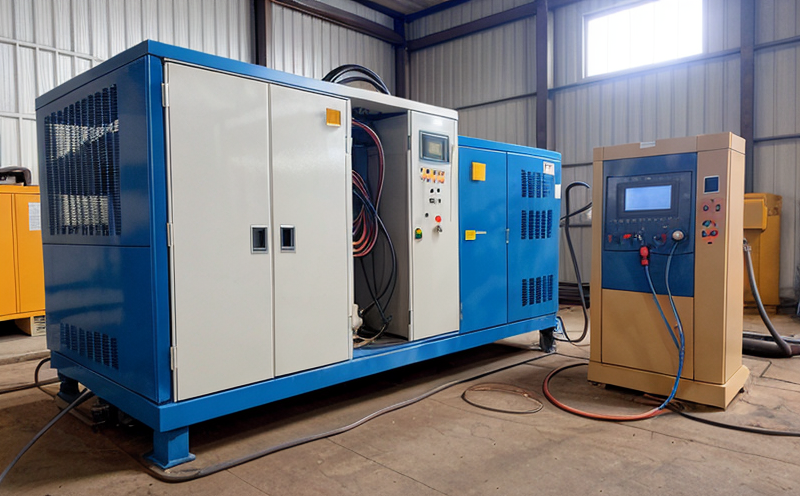Medium voltage equipment inspection
The inspection of medium voltage (MV) electrical and electronic systems is a critical process that ensures safety, reliability, and compliance with international standards. Medium voltage typically refers to electrical power supply voltages greater than 1 kV but less than or equal to 35 kV. This range is particularly important because it bridges the gap between low voltage and high voltage systems, serving as the backbone of many industrial facilities, utilities, and infrastructures.
MV equipment inspection involves a series of non-destructive testing (NDT) techniques aimed at detecting flaws or defects that could compromise system integrity. These inspections are essential for preventing costly downtime, ensuring regulatory compliance, and enhancing safety in environments where MV systems operate. The primary goal is to maintain high reliability while minimizing maintenance costs through proactive identification of potential issues.
International standards such as ISO 19032, IEC 60270, ASTM F1884, and EN 50260 provide a comprehensive framework for MV equipment inspection. These guidelines cover everything from the types of tests to be performed (such as visual inspections, insulation resistance testing, partial discharge measurements) to the acceptance criteria that must be met to ensure safe and reliable operation.
The process begins with thorough documentation of the system's history and current condition. This includes reviewing previous inspection reports, identifying any known issues or anomalies, and assessing environmental factors such as temperature, humidity, and mechanical stress. Once this preparatory work is completed, inspections can be carried out using various advanced technologies including ultrasonic testing (UT), radiographic examination, and thermography.
For instance, UT allows the detection of internal flaws in conductors or joints without disrupting their structure. Radiography provides detailed images of internal components that are inaccessible to other methods. Thermography helps identify overheating areas which may indicate a developing fault. After conducting these inspections, data is analyzed and summarized into comprehensive reports providing insights into the current state of the equipment.
Ensuring medium voltage equipment meets stringent quality standards not only protects personnel but also contributes significantly to reducing unplanned outages. By adhering strictly to international regulations like ISO 19032 for visual inspection, or IEC 60270 for insulation resistance testing, laboratories can provide clients with assurance that their systems are operating safely and efficiently.
| Inspection Method | Description | Use Case |
|---|---|---|
| Visual Inspection | Precise observation of visible signs such as cracks, wear marks, or discoloration. | Detecting surface defects in insulation materials. |
| Insulation Resistance Testing | Measuring the resistance between two points on a conductor to identify possible breakdowns. | Evaluating the integrity of cable jackets and other insulating components. |
| Partial Discharge Measurement | Detecting weak electrical signals caused by partial discharge phenomena within the equipment. | Identifying early signs of insulation degradation in transformers or switchgear units. |
Why It Matters
The importance of medium voltage equipment inspection cannot be overstated. MV systems are integral to numerous sectors including manufacturing, transportation, and energy production. Any malfunction can lead to significant disruptions in service delivery, resulting in financial losses and safety risks.
- Reduces downtime through early detection of issues.
- Promotes compliance with regulatory requirements ensuring legal adherence.
- Enhances overall system reliability leading to longer operational lifespans.
- Minimizes maintenance costs by preventing failures that would otherwise require extensive repairs or replacements.
A well-executed inspection program also fosters a culture of continuous improvement within organizations. By tracking trends over time, management can make informed decisions about necessary upgrades or changes in operational practices. This proactive approach is particularly valuable given the complex and dynamic nature of modern MV systems which often incorporate multiple technologies working together harmoniously.
In summary, regular inspection of medium voltage equipment is not just a compliance exercise; it's an investment in sustainability and resilience. It helps maintain optimal performance levels while safeguarding against potential hazards that could arise from neglect or poor maintenance practices.
Quality and Reliability Assurance
- Conduct thorough visual inspections to detect visible defects.
- Perform insulation resistance tests to measure the integrity of insulating materials.
- Utilize partial discharge measurements to identify early signs of insulation degradation.
- Carry out ultrasonic testing (UT) for internal flaw detection in conductors or joints.
The quality assurance process involves strict adherence to international standards such as ISO 19032, IEC 60270, ASTM F1884, and EN 50260. These standards outline detailed procedures for each type of inspection ensuring consistent results across different locations and operators.
Regular audits are conducted to verify that all inspections comply with these guidelines. Documentation plays a crucial role in this process as it provides tangible evidence of compliance which can be reviewed periodically or upon request from regulatory bodies.
In addition to internal audits, third-party certification bodies may also conduct spot checks. Their involvement adds another layer of assurance that the inspected equipment meets not only local but also international standards thereby enhancing trust among stakeholders including customers, suppliers, and partners.
Use Cases and Application Examples
- MV systems in industrial plants where continuous operation is vital for production processes.
- Utility companies responsible for power distribution networks spanning vast geographical areas.
- Railway infrastructure that relies heavily on MV equipment to supply electricity to trains and related facilities.
In an industrial plant setting, regular inspections help maintain consistent production levels by ensuring all electrical systems are functioning optimally. For utilities, these checks ensure reliable power distribution minimizing the risk of blackouts affecting large populations. In railway applications, maintaining MV systems guarantees safe travel for millions of passengers annually.
Consider a case study involving a major rail operator who experienced frequent breakdowns in their overhead contact wire system leading to service disruptions. After implementing a rigorous inspection program based on industry best practices, they observed a remarkable decrease in incidents significantly improving service reliability and customer satisfaction.





